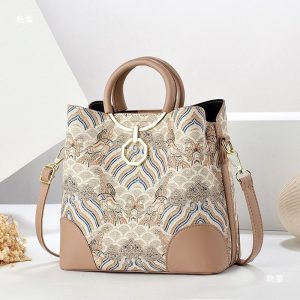Background
Nestled in the heart of China’s Jiangsu province lies the humble town of Yixing, a place that has, for centuries, been the epicenter of an artistic and cultural phenomenon centered around a unique material: purple clay, or zisha. This unassuming earthy substance, mined from the local hills, has captivated artisans, collectors, and tea enthusiasts worldwide with its remarkable properties and aesthetic appeal. Unlike ordinary clay, purple clay possesses a distinct granular texture and a rich, natural coloration that ranges from deep burgundy and reddish-brown to subtle ochre and greenish hues, each tone telling a story of mineral composition and firing technique. The history of purple clay pottery dates back to the Song Dynasty, but it was during the Ming and Qing eras that it truly flourished, becoming synonymous with the art of tea brewing and refined living. Today, it remains a symbol of heritage, craftsmanship, and the seamless blend of function and beauty.
 artisan handcrafting purple clay pottery" loading="lazy">
artisan handcrafting purple clay pottery" loading="lazy">Why It Matters
The unique characteristics of purple clay are not merely superficial; they are deeply rooted in its geological formation and chemical makeup. Formed over millennia from sedimentary deposits rich in iron, quartz, and mica, the clay is exceptionally porous yet durable, allowing it to breathe in a way that enhances the tea experience. When crafted into teapots, this porosity enables the clay to absorb the oils and aromas of tea over time, gradually seasoning the vessel and enriching subsequent brews. This process, often referred to as “raising the pot,” creates a patina that devotees cherish, believing that a well-used Yixing teapot can eventually brew tea with depth and nuance unmatched by any other material. Moreover, the clay’s natural thermal retention ensures that heat is distributed evenly, preventing scalding and allowing the tea leaves to unfurl optimally, releasing their full flavor profile.
According to a recent study published in the Journal of Ceramic Science and Art (2023), researchers found that teapots made from authentic Yixing purple clay exhibit significantly higher absorption rates for catechins and theanine—key compounds responsible for tea’s antioxidant properties and umami taste—compared to porcelain or glass vessels. The study, led by Dr. Li Wei of Nanjing University, involved chemical analysis of tea brewed in various materials over six months, concluding that the microporous structure of purple clay not only enhances flavor complexity but may also contribute to preserving the beneficial elements of tea, making each cup not just a ritual but a healthier experience. This scientific validation echoes centuries of anecdotal praise from tea masters, bridging tradition with modern inquiry.
Beyond its functional virtues, purple clay is celebrated for its artistic expression. Each piece is typically handcrafted by skilled artisans who employ time-honored techniques passed down through generations. The process begins with the careful selection and aging of raw clay, which is then wedged, shaped on a potter’s wheel or using molds, and intricately carved or impressed with designs that often draw inspiration from nature, poetry, or classical motifs. Firing occurs in kilns at temperatures around 1100-1200°C, where the clay undergoes a transformation, its colors deepening and its surface developing a subtle, unglazed sheen that feels warm to the touch. This lack of glaze is intentional; it preserves the clay’s natural texture and allows it to interact directly with the tea, a philosophy that underscores the wabi-sabi appreciation for imperfection and authenticity.
However, the world of purple clay is not without its challenges and controversies. The rising global demand has led to issues of authenticity, with counterfeit products flooding markets. True Yixing clay is finite, sourced from specific mines that are now protected, leading to scarcity and inflated prices for genuine pieces. Connoisseurs learn to distinguish real from fake by examining the clay’s texture, weight, and the sound it makes when tapped—a clear, resonant ring often indicates quality. Additionally, modern artisans grapple with balancing tradition innovation, some incorporating contemporary designs while adhering to classical methods, ensuring the craft evolves without losing its soul.
Purple clay’s influence extends beyond teapots to include cups, sculptures, and even decorative items, each carrying a whisper of cultural heritage. In Chinese philosophy, it embodies the harmony between humanity and nature, a material shaped by human hands yet intrinsically tied to the earth. For collectors, acquiring a Yixing piece is often a lifelong pursuit, with antique teapots fetching astronomical sums at auctions, not just for their utility but as historical artifacts. Meanwhile, everyday users find joy in the slow, mindful practice of brewing tea, where the pot becomes a companion in moments of reflection and connection.
In an era of mass production and disposable goods, purple clay stands as a testament to sustainability and timelessness. Each teapot, with its unique imperfections and evolving character, encourages a deeper engagement with the objects we use and the rituals we cherish. Whether you’re a seasoned tea aficionado or a curious newcomer, embracing purple clay is an invitation to slow down, savor the nuances, and appreciate the artistry that transforms humble earth into a vessel of history, culture, and unparalleled sensory experience.
You May Also Like
Ancient Craftsmanship & ICH Herbal Beads Bracelet with Yellow Citrine & Silver Filigree Cloud-Patterned Luck-Boosting Beads
Original price was: $128.00.$89.00Current price is: $89.00. Add to cart- handmade-tote-ethnic-boho-large-capacity-shoulder-bag/" class="woocommerce-LoopProduct-link woocommerce-loop-product__link">Add to cart


Guangxi Zhuang Brocade Handmade Tote – Ethnic Boho Large-Capacity Shoulder Bag
Original price was: $172.00.$150.00Current price is: $150.00. Add to cart Handwoven Zhuang Brocade Tote Bag – Large-Capacity Boho Shoulder Bag
Original price was: $178.00.$154.00Current price is: $154.00. Add to cartThe Palace Museum Paper-Cut Light Art Fridge Magnets: Chinese Cultural Style Creative Gift Series
Price range: $27.00 through $36.00 Select options This product has multiple variants. The options may be chosen on the product page






